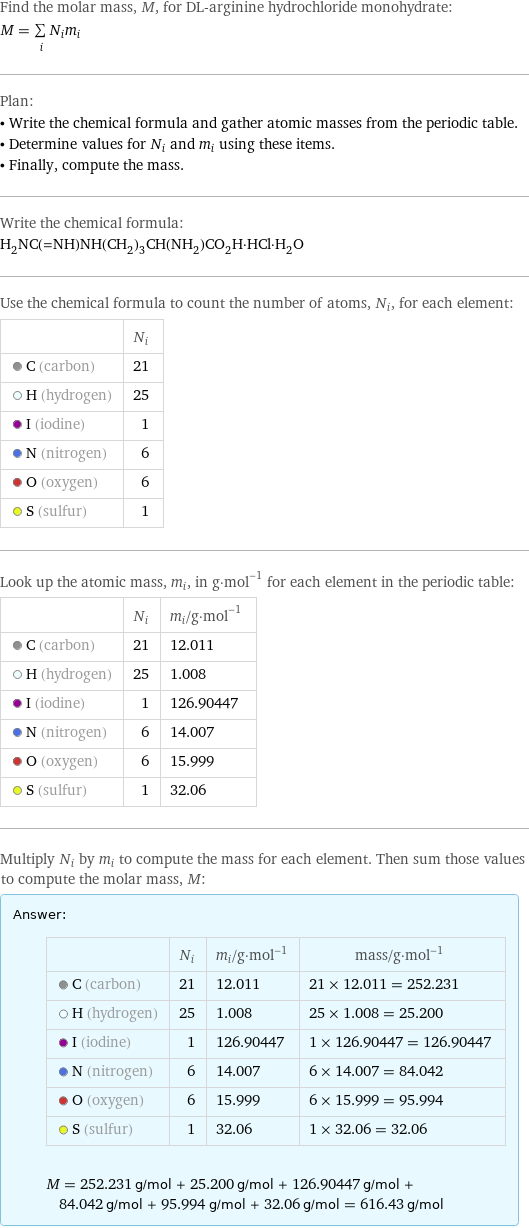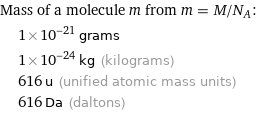Input interpretation

DL-arginine hydrochloride monohydrate | molar mass
Result

Find the molar mass, M, for DL-arginine hydrochloride monohydrate: M = sum _iN_im_i Plan: • Write the chemical formula and gather atomic masses from the periodic table. • Determine values for N_i and m_i using these items. • Finally, compute the mass. Write the chemical formula: H_2NC(=NH)NH(CH_2)_3CH(NH_2)CO_2H·HCl·H_2O Use the chemical formula to count the number of atoms, N_i, for each element: | N_i C (carbon) | 21 H (hydrogen) | 25 I (iodine) | 1 N (nitrogen) | 6 O (oxygen) | 6 S (sulfur) | 1 Look up the atomic mass, m_i, in g·mol^(-1) for each element in the periodic table: | N_i | m_i/g·mol^(-1) C (carbon) | 21 | 12.011 H (hydrogen) | 25 | 1.008 I (iodine) | 1 | 126.90447 N (nitrogen) | 6 | 14.007 O (oxygen) | 6 | 15.999 S (sulfur) | 1 | 32.06 Multiply N_i by m_i to compute the mass for each element. Then sum those values to compute the molar mass, M: Answer: | | | N_i | m_i/g·mol^(-1) | mass/g·mol^(-1) C (carbon) | 21 | 12.011 | 21 × 12.011 = 252.231 H (hydrogen) | 25 | 1.008 | 25 × 1.008 = 25.200 I (iodine) | 1 | 126.90447 | 1 × 126.90447 = 126.90447 N (nitrogen) | 6 | 14.007 | 6 × 14.007 = 84.042 O (oxygen) | 6 | 15.999 | 6 × 15.999 = 95.994 S (sulfur) | 1 | 32.06 | 1 × 32.06 = 32.06 M = 252.231 g/mol + 25.200 g/mol + 126.90447 g/mol + 84.042 g/mol + 95.994 g/mol + 32.06 g/mol = 616.43 g/mol
Unit conversion

0.6164 kg/mol (kilograms per mole)
Comparisons

≈ 0.86 × molar mass of fullerene ( ≈ 721 g/mol )

≈ 3.2 × molar mass of caffeine ( ≈ 194 g/mol )

≈ 11 × molar mass of sodium chloride ( ≈ 58 g/mol )
Corresponding quantities

Mass of a molecule m from m = M/N_A: | 1×10^-21 grams | 1×10^-24 kg (kilograms) | 616 u (unified atomic mass units) | 616 Da (daltons)

Relative molecular mass M_r from M_r = M_u/M: | 616